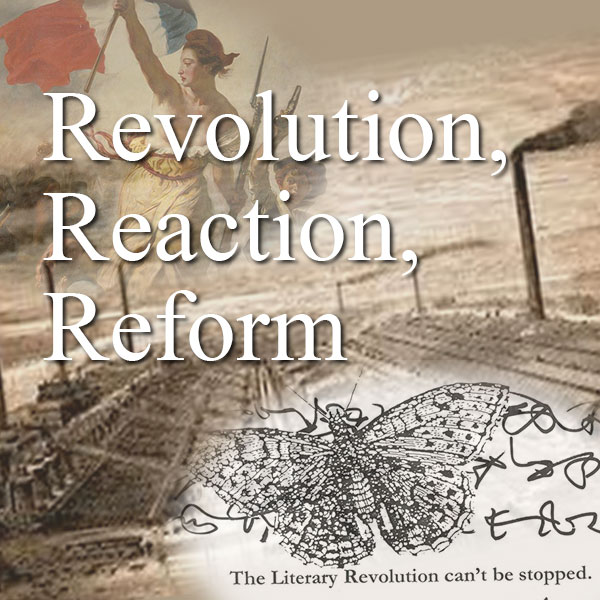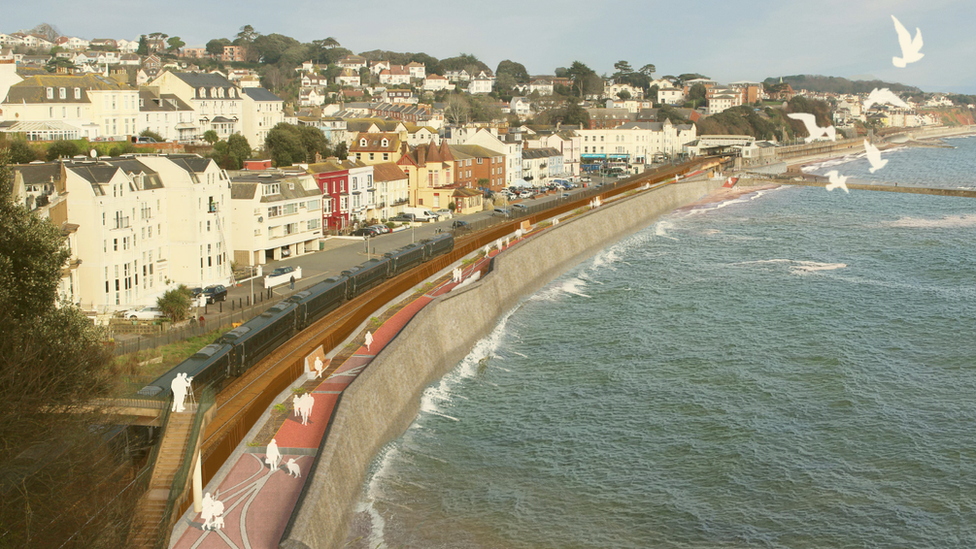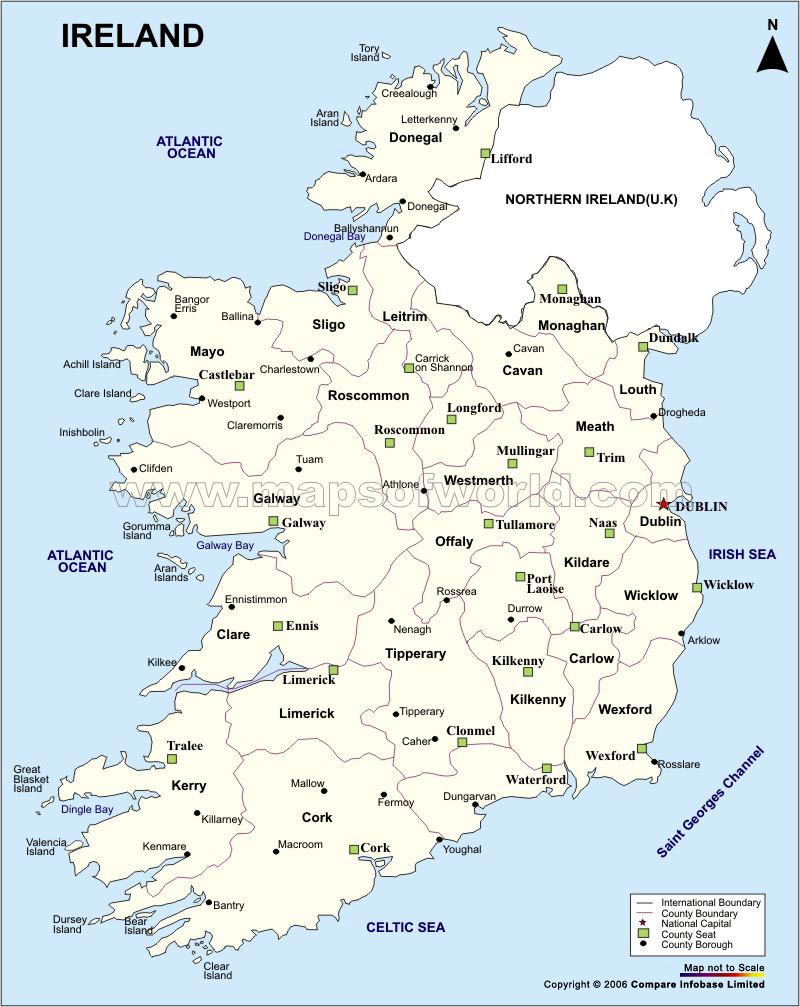MSSU ENG272 - Spring 2021 Dashboard
Description
 British Literature II: Revolution, Reaction, Reform examines British literature from the late eighteenth century to the present, a period that witnessed the American and French Revolutions, slave revolts such as the Haitian Revolution, a “revolution in female manners,” the Industrial Revolution, the twentieth-century revolutionary wave in Europe, as well as World War I and World War II, and, of course, artistic revolutions. We will consider how the authors and literary works of this period might be reacting to change, advocating for reform, or participating in literary revolutions—whether revolution is understood in the sense of “revolving” or of “revolting,” going full circle to return to a previous (more perfect?) time or experiencing/effecting a great alteration or rupture.
British Literature II: Revolution, Reaction, Reform examines British literature from the late eighteenth century to the present, a period that witnessed the American and French Revolutions, slave revolts such as the Haitian Revolution, a “revolution in female manners,” the Industrial Revolution, the twentieth-century revolutionary wave in Europe, as well as World War I and World War II, and, of course, artistic revolutions. We will consider how the authors and literary works of this period might be reacting to change, advocating for reform, or participating in literary revolutions—whether revolution is understood in the sense of “revolving” or of “revolting,” going full circle to return to a previous (more perfect?) time or experiencing/effecting a great alteration or rupture.
We'll be using the following texts at COVE Studio in the anthology British Literature II (MSSU), Spring 2021:
William Wordsworth, "We Are Seven"
William Wordsworth, "Tintern Abbey"
William Wordsworth, "I wandered lonely as a cloud"
Samuel Taylor Coleridge, "The Eolian Harp"
Samuel Taylor Coleridge, "This Lime-Tree Bower My Prison"
Samuel Taylor Coleridge, "Metrical Feet"
Mary Shelley, Frankenstein
Robert Browning, "Porphyria's Lover"
Robert Browning, "Soliloquy of the Spanish Cloister"
Robert Browning, "My Last Duchess"
Alfred, Lord Tennyson, "Lady of Shalott"
Alfred, Lord Tennyson, "The Charge of the Light Brigade"
Thomas Hood, "The Song of the Shirt"
Elizabeth Barrett Browning, "The Cry of the Children"
Rupert Brooke, "The Soldier"
Virginia Woolf, "The Mark on the Wall"
T. S. Eliot, "The Love Song of J. Alfred Prufrock"
W. H. Auden, "Musée des Beaux Arts"
Dylan Thomas, "Do Not Go Gentle into That Good Night"
The digital edition of North and South for the map project can be found here:
Galleries, Timelines, and Maps
This gallery contains illustrations of Victorian-era works assigned for ENG 272: British Literature II (Missouri Southern State University).
 This gallery is part of the ENG 272 collaborative "Age of Romanticism" Map, one element of the Image, Event, Place Project. Add one image that is related or relevant in some way to the work we have been reading in the first several weeks of class. Provide sufficient detail to explain the historical or cultural detail and, perhaps, how it relates to one or more literary works we have read. Be sure to cite your source(s) using MLA bibliographic conventions. One image element is included as an example.
This gallery is part of the ENG 272 collaborative "Age of Romanticism" Map, one element of the Image, Event, Place Project. Add one image that is related or relevant in some way to the work we have been reading in the first several weeks of class. Provide sufficient detail to explain the historical or cultural detail and, perhaps, how it relates to one or more literary works we have read. Be sure to cite your source(s) using MLA bibliographic conventions. One image element is included as an example.
This assignment is modeled on... more
 This map is part of the ENG 272 collaborative "Age of Romanticism" Map, one element of the Image, Event, Place Project. Add one map element that is related or relevant in some way to the work we have been reading in the first several weeks of class. Provide sufficient detail to explain the historical or cultural detail and, perhaps, how it relates to one or more literary works we have read. Be sure to cite your source(s) using MLA bibliographic conventions. A few map elements have already been added (drawing from the COVE database)....
This map is part of the ENG 272 collaborative "Age of Romanticism" Map, one element of the Image, Event, Place Project. Add one map element that is related or relevant in some way to the work we have been reading in the first several weeks of class. Provide sufficient detail to explain the historical or cultural detail and, perhaps, how it relates to one or more literary works we have read. Be sure to cite your source(s) using MLA bibliographic conventions. A few map elements have already been added (drawing from the COVE database)....
 This timeline is part of the ENG 272 collaborative "Age of Romanticism" Timeline, one element of the Image, Event, Place Project. Add one timeline element that is related or relevant in some way to the work we have been reading in the first several weeks of class. Provide sufficient detail to explain the historical or cultural detail and, perhaps, how it relates to one or more literary works we have read. Be sure to cite your source(s) using MLA bibliographic conventions. A few timeline elements, borrowed from...
This timeline is part of the ENG 272 collaborative "Age of Romanticism" Timeline, one element of the Image, Event, Place Project. Add one timeline element that is related or relevant in some way to the work we have been reading in the first several weeks of class. Provide sufficient detail to explain the historical or cultural detail and, perhaps, how it relates to one or more literary works we have read. Be sure to cite your source(s) using MLA bibliographic conventions. A few timeline elements, borrowed from...
Individual Entries
in the story north and south by elizabeth gaskell the story speaks of cadiz spain due to a characters brother living there. Margaret the main character from North and south has an older brother by the name of Frederick Hale. he is a fugitive living in spain since his involvment with a mutiny while serving beneath a very cruel officer with the Britain Navy. Also in the story Fred goes to cadiz from south america. Here Fred works for an english merchant called Mr. Barbour in which who he gets engaged with his daughter Anglo-Spanish Dolores. to this day the town is famous for its rich history, beautiful beaches, city walls and sunny weather. it is known for "The raid on cadiz" which was an attack led by sir francis drake as Phillip the 2nd was planning the spanish fleet for the Armarda. Entirely this overview of cabiz gives us a better visualization of the atmosphere fred was in and allows us to gain a better feel for why they acted ,dressed and did certain things.
...
more1. An image of a seawall on the coast of Plymouth, Present Day.

2. Plymouth is mentioned during North and South in Chapter III when Margaret asks Henry Lennox about Edith's whereabouts. Her and Lennox begin exchanging words and Lennox tells her that he feared for Edith's adventurous nature and didn't feel safe until she embarked by boat to Plymouth. Margaret then tells Lennox that she now knows why Edith's correspondence is taking so long. This helps drive the plot because as readers we get more insight into Edith's nature and how adventurous her spirit is. Similarly, it helps readers recognize how Margaret is left out of the loop on the happenings of the "prestigious" family that she spent time with in the big city. Maybe I'm grabbing at straws, but I think that its a good example of Margaret's...
more1. A picture of a yawl leaving port just outside of Liverpool near the town of Sefton.

2. Sefton, which is a suburb to the town of Liverpool, is represented in North and South as the fictional town of Heston. After Mr. Hale announces that he's leaving the parish in Helstone the Hales pack their belongings and begin their travels to Milton, which is in the north of the UK. On the way, they stop in this seaside town of Heston to get a hotel while Margaret and Mr. Hale look for housing and jobs in Milton a town over. Margaret notices that the town of Heston is more bleek and the people are more busy than in Helstone. While Margaret does feel rested in Heston while travelling, she notices the different lifestyles people lead and the busyness of the town. This is important because it acts as a middle ground from Margaret's home...
more1.

2. Ireland appears in North and South in chapters XVII Likes and Dislikes and XXII A blow and its consequences. John Thornton is discussing bringing workers from Ireland and, it mentions in A Blow And Its Consequences that John has brought Irish workers in and, a riot starts because of this act.
3. Ireland is divided, into the Republic of Ireland and Northern Ireland is apart of the United Kingdom. Ireland has developed a rich heritage that is connected to the Gaelic language. The total population of the island is 7,000,000. And because of famine, the people of Ireland migrated to new lives.
4. The research I have done helps us all to understand the novel better by...
moreThe West Indies are the islands that separate the Gulf of Mexico and the Caribbean Sea, modern day Cuba, Dominican Republic, Haiti, Jamaica, Puerto Rico, the Bahamas and Turks and Caicos. Slave labor had been used in the West Indies for close to two hundred years, but around the time of North and South things had started to change. Britain abolished slavery completely in 1838 and were followed by the French in 1848 and the Dutch in 1863.
The West Indies are never directly mentioned in North and...
moreIn the 17th century Harley Street was a very sought-after location. The area was developed with many fashionable houses around 1715. The street is in Cavendish Square, which was very popular in the late 1700s, a tradition that still carries on today. Around 1860 the population seeking homes on Harley Street became very specific, doctors began to move onto the street because of its proximity to major rail lines and the beautiful homes.
...
more1. 
2. In North and South by Elizabeth Gaskell Alhambra, Spain is mentioned in Chapter XII Morning Calls. Fanny and Margaret are talking about places they long to see and Fanny mentions London and Abraham is a place that Fanny would love to see.
3. Throughout the research process, I learned that Alhambra, Spain is a palace and fortress of the Moorish monarchs of Granada, Spain that is famous for its beauty. The palace built in the 13th and 14th centuries by the Muslim Nasrid dynasty,...
more